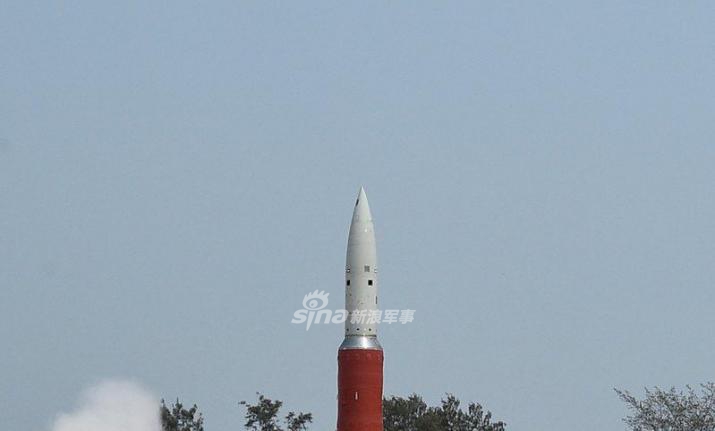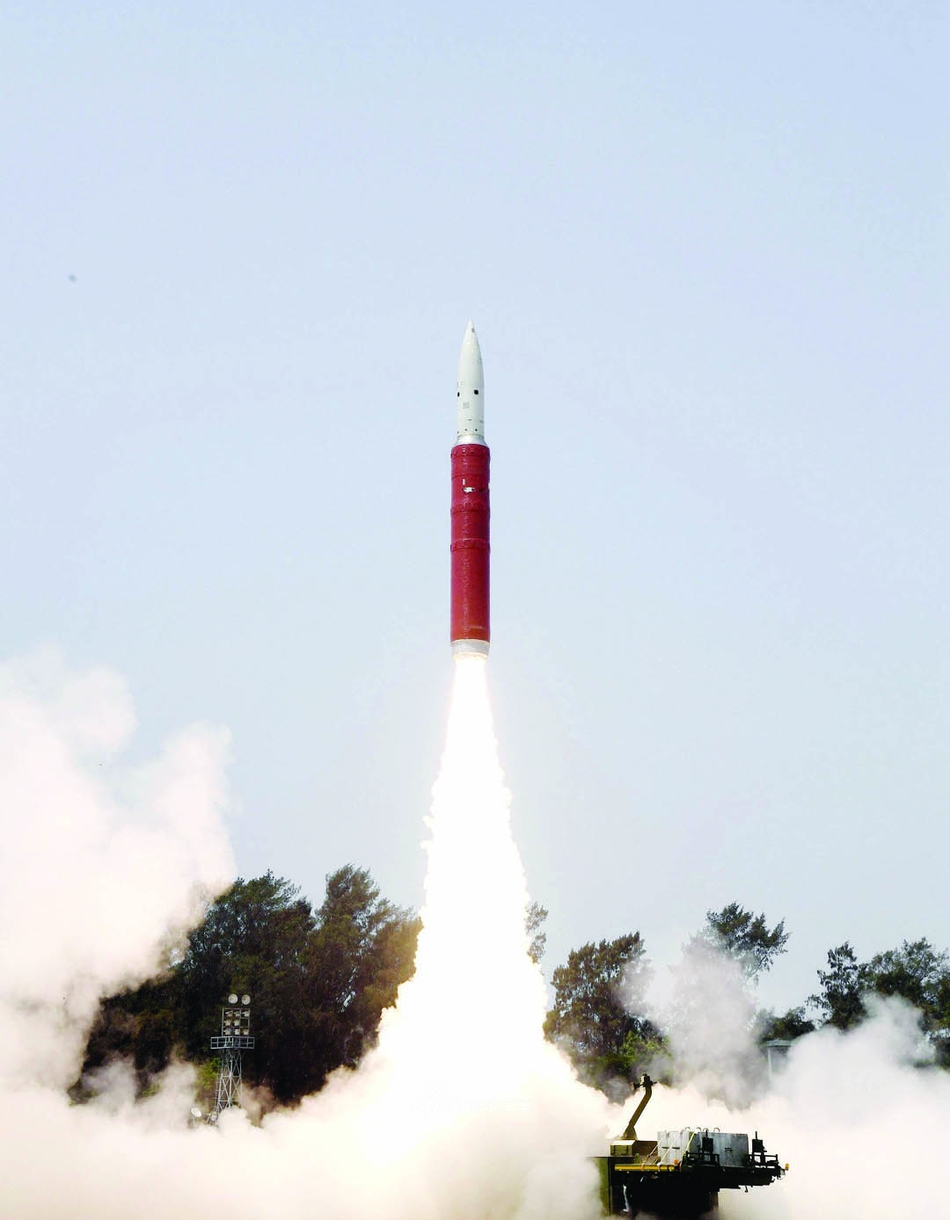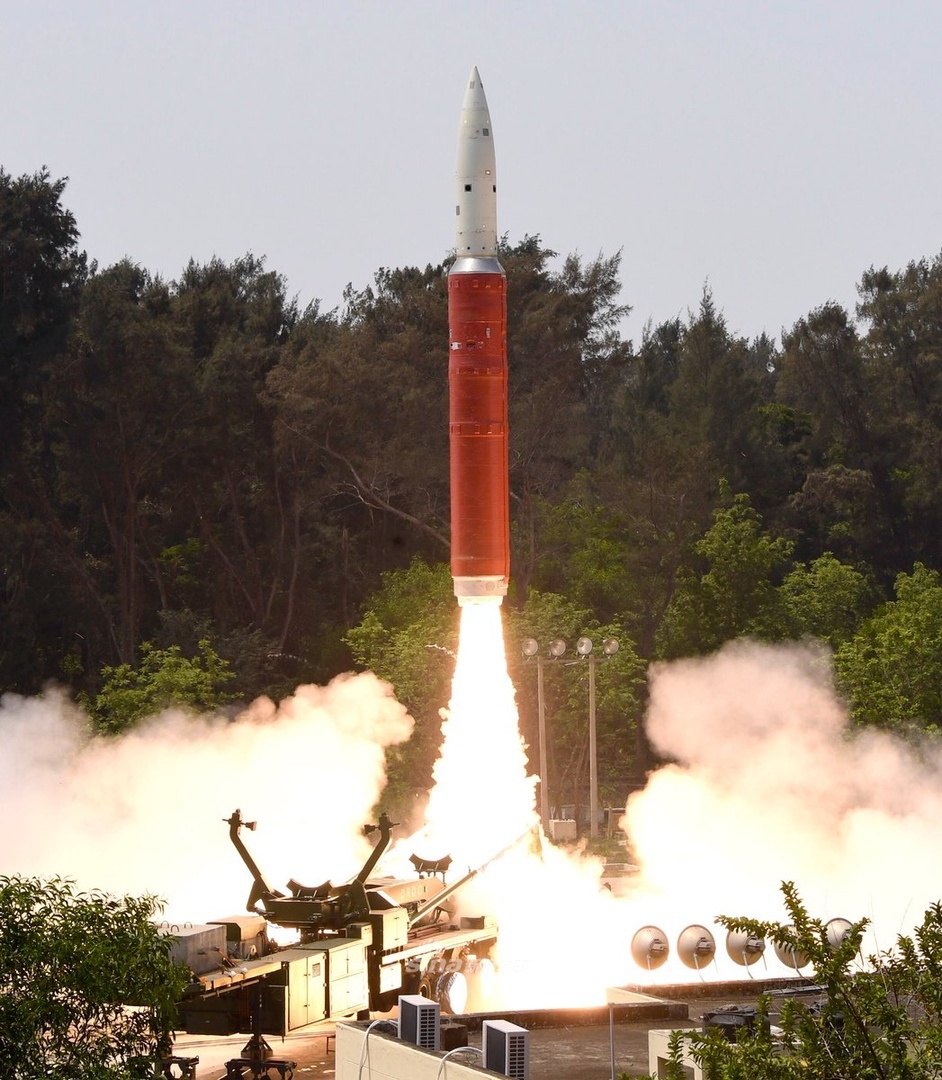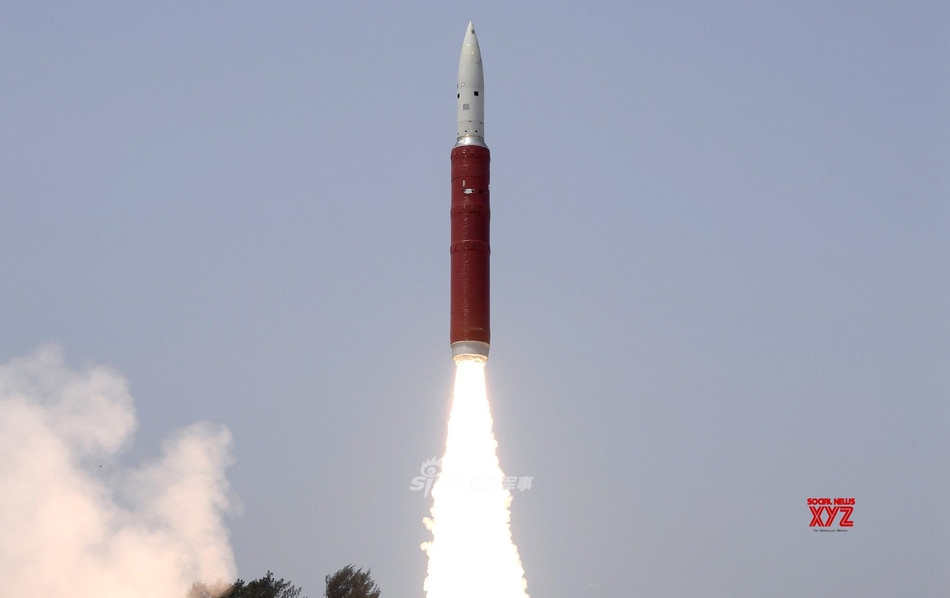China says: Hey Ah Neh... you shot only from Tekka to Mustafa too much less to be of any usefulness, try harder to reach Orchard Road Istana then can be of usefulness!
http://slide.mil.news.sina.com.cn/k/slide_8_235_71110.html#p=1
射程再增2倍才能实战!印度成功进行反卫星武器试验
支持 键翻阅图片 列表查看
全屏观看
2019.03.28 09:27:14
1 / 6
27日中午,印度总理莫迪在对全国的电视广播中高调宣布成功进行了一次反卫星试验,并称这使得印度成为继美、俄、中之后,第四个具备反卫星能力的国家。不过莫迪透露的细节极为有限。据印度媒体报道,被击落的卫星位于距离地面300公里左右的轨道高度。中国专家分析认为,其拦截弹可能是在现有反导拦截弹的基础上改进研制的。
射程再增2倍才能实战!印度成功进行反卫星武器试验
支持 键翻阅图片 列表查看
全屏观看
2019.03.28 09:27:14
印度《经济时报》网站27日报道称,印度总理莫迪当天宣布,印度国防研究组织(DRDO)的导弹成功击中近地轨道卫星后,印度已进入能够击落太空卫星的精英俱乐部。在演讲中,莫迪表示,“沙克提任务”是一个难度很大的目标,但在导弹发射后的3分钟内完成了试验。报道称,尽管印度自2012年以来一直具备开发反卫星武器的技术能力,但过去印度政府没有给予足够政治支持。莫迪在发言中强调,该导弹并非针对任何国家,而且印度仍然反对在太空使用武器。
射程再增2倍才能实战!印度成功进行反卫星武器试验
支持 键翻阅图片 列表查看
全屏观看
2019.03.28 09:27:14
关于这次具有历史意义的反卫星试验,“击落距地面300公里近地轨道卫星”是印方发布的一个重要指标。那300公里的轨道高度到底意味着什么呢?印度新德里电视台网站称,此次任务展现出印度有能力击落在300公里高轨道运行的卫星。接受《环球时报》记者采访的中国军事专家表示,这个高度比大多数近地轨道卫星运行的轨道都低一些,因为卫星在这个高度维持轨道需要的成本比较高。比如,中国“吉林-1号”卫星的运行轨道是平均轨道高度为650公里的太阳同步轨道。这颗印度卫星也比空间站和空间实验室的轨道都低。印度这颗卫星应该是为反卫星试验专门发射的
射程再增2倍才能实战!印度成功进行反卫星武器试验
支持 键翻阅图片 列表查看
全屏观看
2019.03.28 09:27:14
射程再增2倍才能实战!印度成功进行反卫星武器试验
支持 键翻阅图片 列表查看
全屏观看
2019.03.28 09:27:14
Http://slide.mil.news.sina.com.cn/k/slide_8_235_71110.html#p=1
The range is increased by 2 times to be practical! India successfully conducted anti-satellite weapons test
Support button flip through pictures list view
Full screen view
2019.03.28 09:27:14
1 / 6
At noon on the 27th, Indian Prime Minister Modi announced a successful anti-satellite test in a high-profile national television broadcast, saying that this made India the fourth country with anti-satellite capabilities after the United States, Russia and China. However, the details revealed by Modi are extremely limited. According to Indian media reports, the satellites that were shot down were located at an orbital height of about 300 kilometers from the ground. Chinese experts believe that its interceptor bombs may be improved on the basis of existing anti-missile interceptors.
The range is increased by 2 times to be practical! India successfully conducted anti-satellite weapons test
Support button flip through pictures list view
Full screen view
2019.03.28 09:27:14
India’s Economic Times website reported on the 27th that Indian Prime Minister Modi announced on the same day that after the Indian Defense Research Organization (DRDO) missile successfully hit the low-Earth orbit satellite, India has entered an elite club capable of shooting down space satellites. In the speech, Modi said that the "Shakti mission" was a very difficult target, but the test was completed within 3 minutes after the missile was launched. According to the report, although India has been developing the technical capabilities of anti-satellite weapons since 2012, the Indian government has not given sufficient political support in the past. Modi emphasized in his speech that the missile is not aimed at any country, and that India still opposes the use of weapons in space.
The range is increased by 2 times to be practical! India successfully conducted anti-satellite weapons test
Support button flip through pictures list view
Full screen view
2019.03.28 09:27:14
Regarding this historic anti-satellite test, "shooting down 300 km of low-earth orbit satellites from the ground" is an important indicator issued by the Indian side. What does the 300-kilometer orbital altitude mean? India’s New Delhi TV website said the mission demonstrated India’s ability to shoot down satellites operating at 300 kilometers of high orbit. Chinese military experts interviewed by the Global Times reporter said that this height is lower than that of most low-Earth orbit satellites, because the cost of maintaining the orbit at this altitude is relatively high. For example, the running track of China's "Jilin-1" satellite is a sun-synchronous orbit with an average orbital height of 650 kilometers. This Indian satellite is also lower than the orbit of the space station and the space laboratory. The Indian satellite should be specially launched for anti-satellite testing.
The range is increased by 2 times to be practical! India successfully conducted anti-satellite weapons test
Support button flip through pictures list view
Full screen view
2019.03.28 09:27:14
The New Delhi TV website said that although Modi did not mention the name of the "target satellite", it may be the "Microsatellite-R" (Microsat-R) launched by the Polar Satellite Launch Vehicle (PSLV) on January 24 this year. Satellite, the satellite weighs about 740 kilograms and has an orbital height of 277 kilometers. At the time of launch, the Indian Space Research Organization (ISRO) told the outside world that the satellite would be used for defense research. According to expert analysis, India has set the orbital altitude of the target satellite to be set at about 300 kilometers. It is likely to be a reaction to the international community. Once it is questioned, the Indian side can claim to attack the target at a height of 300 kilometers and produce space debris. The hazard is relatively small and does not threaten the International Space Station. Experts believe that if Indian anti-satellite missiles want to be practical, then the height of the satellite orbit of the attack should be at least about 1,000 kilometers.
The range is increased by 2 times to be practical! India successfully conducted anti-satellite weapons test
Support button flip through pictures list view
Full screen view
2019.03.28 09:27:14
The Indian side did not disclose the missile model for this anti-satellite mission. Chinese experts say that it is likely to have a certain inheritance relationship with the existing PDV ("land defense vehicle"), but it is more capable. The PDV is a kind of anti-missile interceptor that intercepts outside the atmosphere. The previous interception test was mainly aimed at a ballistic missile with a range of 2,000 kilometers, and the intercept height was about 100 kilometers. The low-altitude satellites are higher in altitude and larger than intercontinental ballistic missiles, about 7.8 km/s. The interception difficulty is much larger than that of the medium-range ballistic missile, which may exceed the interception capability of the PDV missile. In terms of flight time, the test hit the target about 3 minutes after launching the missile, which is also equivalent to the flight time of the previous PDV anti-missile test. India currently has the technology to further improve the performance of PDV, such as its larger solid rocket engine and improved its killer. Experts say the new interceptor also has anti-missile interception capabilities. Its interception capability (target altitude and speed) is roughly equivalent to the "Standard-3" anti-missile interceptor of the US Navy's active model, but it is believed that its interceptor is much larger than the "Standard-3" series of interceptor. Experts say that this means that India’s anti-missile interception capability has also reached a level.
http://slide.mil.news.sina.com.cn/k/slide_8_235_71110.html#p=1
射程再增2倍才能实战!印度成功进行反卫星武器试验
支持 键翻阅图片 列表查看
全屏观看
2019.03.28 09:27:14
1 / 6
27日中午,印度总理莫迪在对全国的电视广播中高调宣布成功进行了一次反卫星试验,并称这使得印度成为继美、俄、中之后,第四个具备反卫星能力的国家。不过莫迪透露的细节极为有限。据印度媒体报道,被击落的卫星位于距离地面300公里左右的轨道高度。中国专家分析认为,其拦截弹可能是在现有反导拦截弹的基础上改进研制的。
射程再增2倍才能实战!印度成功进行反卫星武器试验
支持 键翻阅图片 列表查看
全屏观看
2019.03.28 09:27:14
印度《经济时报》网站27日报道称,印度总理莫迪当天宣布,印度国防研究组织(DRDO)的导弹成功击中近地轨道卫星后,印度已进入能够击落太空卫星的精英俱乐部。在演讲中,莫迪表示,“沙克提任务”是一个难度很大的目标,但在导弹发射后的3分钟内完成了试验。报道称,尽管印度自2012年以来一直具备开发反卫星武器的技术能力,但过去印度政府没有给予足够政治支持。莫迪在发言中强调,该导弹并非针对任何国家,而且印度仍然反对在太空使用武器。
射程再增2倍才能实战!印度成功进行反卫星武器试验
支持 键翻阅图片 列表查看
全屏观看
2019.03.28 09:27:14
关于这次具有历史意义的反卫星试验,“击落距地面300公里近地轨道卫星”是印方发布的一个重要指标。那300公里的轨道高度到底意味着什么呢?印度新德里电视台网站称,此次任务展现出印度有能力击落在300公里高轨道运行的卫星。接受《环球时报》记者采访的中国军事专家表示,这个高度比大多数近地轨道卫星运行的轨道都低一些,因为卫星在这个高度维持轨道需要的成本比较高。比如,中国“吉林-1号”卫星的运行轨道是平均轨道高度为650公里的太阳同步轨道。这颗印度卫星也比空间站和空间实验室的轨道都低。印度这颗卫星应该是为反卫星试验专门发射的
射程再增2倍才能实战!印度成功进行反卫星武器试验
支持 键翻阅图片 列表查看
全屏观看
2019.03.28 09:27:14
-
新德里电视台网站称,虽然莫迪没有提到“目标卫星”的名称,但这可能是今年1月24日由“极地卫星运载火箭”(PSLV)发射的“微卫星-R”(Microsat-R)卫星,该卫星重约740公斤,轨道高度277公里。发射时,印度空间研究组织(ISRO)告诉外界这颗卫星将用于防务研究。专家分析认为,印度把打击的目标卫星的轨道高度设定为300公里左右,很可能是顾忌国际社会的反应,一旦遭受质疑,印方可以宣称,打击300公里高度上的目标,产生的太空碎片危害相对较小,并且不会威胁到国际空间站。专家认为,如果印度反卫星导弹想要具有实战意义,那么攻击的卫星轨道高度应该至少在1000公里左右。

射程再增2倍才能实战!印度成功进行反卫星武器试验
支持 键翻阅图片 列表查看
全屏观看
2019.03.28 09:27:14
-

- 印度方面并未透露进行此次反卫星任务的导弹型号。中国专家表示,它很可能和现有的PDV(“大地防御载具”)有一定的继承关系,但能力上更强。PDV是一种在大气层外实施拦截的反导拦截弹,之前进行的拦截试验主要针对的是射程2000公里的弹道导弹,拦截高度在100公里左右。而近地轨道卫星的高度更高,其速度要比洲际弹道导弹还大,大约7.8公里/秒。拦截难度是远远大于中程弹道导弹的,这可能超过PDV导弹的拦截能力。从飞行时间来看,这次试验在发射导弹后大约3分钟命中目标,也和之前PDV反导试验的飞行时间相当。印度目前拥有进一步提高PDV性能的技术,比如为其配备更大型的固体火箭发动机,改进其杀伤器。专家表示,这种新的拦截器也具备反导拦截能力。其拦截能力(目标高度和速度)大致相当于美国海军现役型号的“标准-3”反导拦截弹,但相信其拦截弹的体积远比“标准-3”系列拦截弹更大。专家表示,这意味着印度反导拦截能力也上了一个台阶。
Http://slide.mil.news.sina.com.cn/k/slide_8_235_71110.html#p=1
The range is increased by 2 times to be practical! India successfully conducted anti-satellite weapons test
Support button flip through pictures list view
Full screen view
2019.03.28 09:27:14
1 / 6
At noon on the 27th, Indian Prime Minister Modi announced a successful anti-satellite test in a high-profile national television broadcast, saying that this made India the fourth country with anti-satellite capabilities after the United States, Russia and China. However, the details revealed by Modi are extremely limited. According to Indian media reports, the satellites that were shot down were located at an orbital height of about 300 kilometers from the ground. Chinese experts believe that its interceptor bombs may be improved on the basis of existing anti-missile interceptors.
The range is increased by 2 times to be practical! India successfully conducted anti-satellite weapons test
Support button flip through pictures list view
Full screen view
2019.03.28 09:27:14
India’s Economic Times website reported on the 27th that Indian Prime Minister Modi announced on the same day that after the Indian Defense Research Organization (DRDO) missile successfully hit the low-Earth orbit satellite, India has entered an elite club capable of shooting down space satellites. In the speech, Modi said that the "Shakti mission" was a very difficult target, but the test was completed within 3 minutes after the missile was launched. According to the report, although India has been developing the technical capabilities of anti-satellite weapons since 2012, the Indian government has not given sufficient political support in the past. Modi emphasized in his speech that the missile is not aimed at any country, and that India still opposes the use of weapons in space.
The range is increased by 2 times to be practical! India successfully conducted anti-satellite weapons test
Support button flip through pictures list view
Full screen view
2019.03.28 09:27:14
Regarding this historic anti-satellite test, "shooting down 300 km of low-earth orbit satellites from the ground" is an important indicator issued by the Indian side. What does the 300-kilometer orbital altitude mean? India’s New Delhi TV website said the mission demonstrated India’s ability to shoot down satellites operating at 300 kilometers of high orbit. Chinese military experts interviewed by the Global Times reporter said that this height is lower than that of most low-Earth orbit satellites, because the cost of maintaining the orbit at this altitude is relatively high. For example, the running track of China's "Jilin-1" satellite is a sun-synchronous orbit with an average orbital height of 650 kilometers. This Indian satellite is also lower than the orbit of the space station and the space laboratory. The Indian satellite should be specially launched for anti-satellite testing.
The range is increased by 2 times to be practical! India successfully conducted anti-satellite weapons test
Support button flip through pictures list view
Full screen view
2019.03.28 09:27:14
The New Delhi TV website said that although Modi did not mention the name of the "target satellite", it may be the "Microsatellite-R" (Microsat-R) launched by the Polar Satellite Launch Vehicle (PSLV) on January 24 this year. Satellite, the satellite weighs about 740 kilograms and has an orbital height of 277 kilometers. At the time of launch, the Indian Space Research Organization (ISRO) told the outside world that the satellite would be used for defense research. According to expert analysis, India has set the orbital altitude of the target satellite to be set at about 300 kilometers. It is likely to be a reaction to the international community. Once it is questioned, the Indian side can claim to attack the target at a height of 300 kilometers and produce space debris. The hazard is relatively small and does not threaten the International Space Station. Experts believe that if Indian anti-satellite missiles want to be practical, then the height of the satellite orbit of the attack should be at least about 1,000 kilometers.
The range is increased by 2 times to be practical! India successfully conducted anti-satellite weapons test
Support button flip through pictures list view
Full screen view
2019.03.28 09:27:14
The Indian side did not disclose the missile model for this anti-satellite mission. Chinese experts say that it is likely to have a certain inheritance relationship with the existing PDV ("land defense vehicle"), but it is more capable. The PDV is a kind of anti-missile interceptor that intercepts outside the atmosphere. The previous interception test was mainly aimed at a ballistic missile with a range of 2,000 kilometers, and the intercept height was about 100 kilometers. The low-altitude satellites are higher in altitude and larger than intercontinental ballistic missiles, about 7.8 km/s. The interception difficulty is much larger than that of the medium-range ballistic missile, which may exceed the interception capability of the PDV missile. In terms of flight time, the test hit the target about 3 minutes after launching the missile, which is also equivalent to the flight time of the previous PDV anti-missile test. India currently has the technology to further improve the performance of PDV, such as its larger solid rocket engine and improved its killer. Experts say the new interceptor also has anti-missile interception capabilities. Its interception capability (target altitude and speed) is roughly equivalent to the "Standard-3" anti-missile interceptor of the US Navy's active model, but it is believed that its interceptor is much larger than the "Standard-3" series of interceptor. Experts say that this means that India’s anti-missile interception capability has also reached a level.



